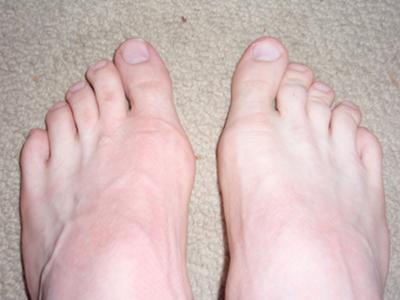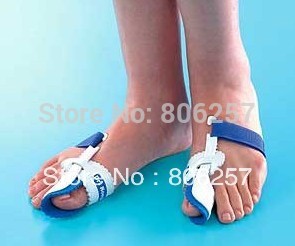Bunions Causes And Cures
Overview
 Bunion pain can be debilitating and bunion surgery can be a scary decision most people would rather put off. I know. I've been there and I've learned that IF you know what to expect ahead of time and what questions to ask your doctor, you will lessen your fear, make better decisions, and increase your success with bunion surgery and bunion surgery recovery. No matter how good your podiatrist or bunion surgeon is, the truth is, no one knows exactly what's right for you except you and that's what can make your decision so scary. What if the surgery doesn't really fix the problem, and like others you read about or hear about, you end up worse off than before? It's not always clear what to do, but with the right information, questions, and support, it can be an easier decision for you.
Bunion pain can be debilitating and bunion surgery can be a scary decision most people would rather put off. I know. I've been there and I've learned that IF you know what to expect ahead of time and what questions to ask your doctor, you will lessen your fear, make better decisions, and increase your success with bunion surgery and bunion surgery recovery. No matter how good your podiatrist or bunion surgeon is, the truth is, no one knows exactly what's right for you except you and that's what can make your decision so scary. What if the surgery doesn't really fix the problem, and like others you read about or hear about, you end up worse off than before? It's not always clear what to do, but with the right information, questions, and support, it can be an easier decision for you.
Causes
Prolonged pressure against the inside portion of the 1st MTP joint can lead to Bunions. This most commonly occurs as a result of wearing pointed toe shoes or shoes that are too tight. Another cause is over-pronation. Normal ?toe-off?occurs from bottom of the big toe. Over-pronation can cause one to ?toe-off? on the inside portion of the big toe versus the bottom. Over time, there is a retrograde force into the joint which pushes it out stretches the joint capsule. This tearing and stretching of the joint capsule as well as the wear and tear on the cartilage is what causes the pain.
Symptoms
The symptoms of bunions include irritated skin around the bunion, pain when walking, joint redness and pain, and possible shift of the big toe toward the other toes. Blisters may form more easily around the site of the bunion as well. Having bunions can also make it more difficult to find shoes that fit properly; bunions may force a person to have to buy a larger size shoe to accommodate the width the bunion creates. When bunion deformity becomes severe enough, the foot can hurt in different places even without the constriction of shoes because it then becomes a mechanical function problem of the forefoot.
Diagnosis
When an x-ray of a bunion is taken, there is usually angulation between the first metatarsal bone and the bones of the big toe. There may also be angulation between the first and second metatarsal bones. These angular irregularities are the essence of most bunions. In general, surgery for bunions aims to correct such angular deformities.
Non Surgical Treatment
Some bunions can be treated without surgery. If you have a bunion, wear shoes that are roomy enough so that they won?t put pressure on it. You can choose to have your shoes stretched out professionally or try cushioning the painful area with protective pads. Orthotics have been shown to help prevent progression of bunions. Oral nonsteroidal anti-inflammatory drugs (NSAIDs), such as ibuprofen, may be recommended to reduce pain and inflammation. Applying an ice pack several times a day can also help reduce inflammation and pain. If your bunion progresses to a point where you have difficulty walking or experience pain even with accommodative shoes, surgery may be necessary. 
Surgical Treatment
If non-surgical treatments have failed to relieve your bunion pain, or when the pain is interfering with your daily activities, contact the Dallas bunion surgery specialists at North Texas Foot & Ankle to discuss surgical options. There are a several ways to perform bunion surgery. The best procedure for one person is not necessarily the best for another. Some procedures allow you to walk much sooner, reducing the need for crutches. Depending on your foot type, the procedure can have a greater risk for return of the bunion deformity. Other procedures may require you to be on crutches for a few weeks - but could offer a better result in the long-term. Learn more about the different types of bunion surgery.
Prevention
To help prevent bunions be sure your shoes don't cramp or irritate your toes. Choose shoes with a wide toe box - there should be space between the tip of your longest toe and the end of the shoe. Your shoes should conform to the shape of your feet without squeezing or pressing any part of your foot. Avoid pointy-toed shoes.